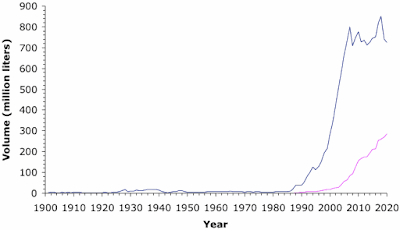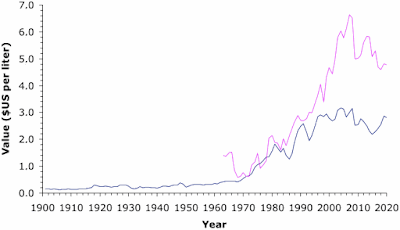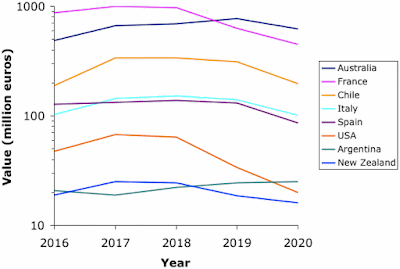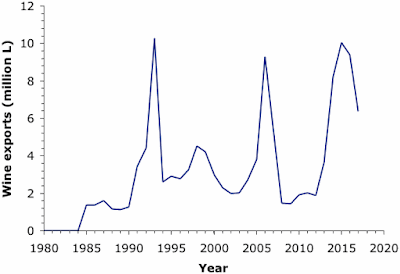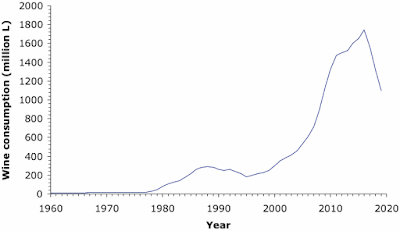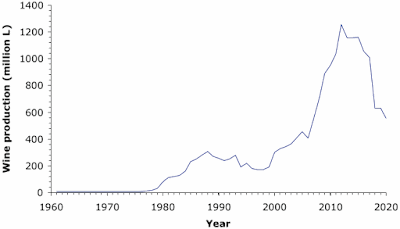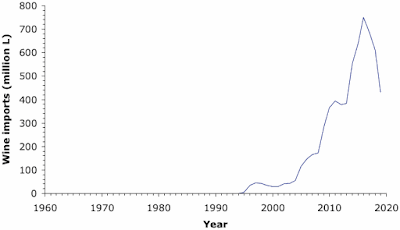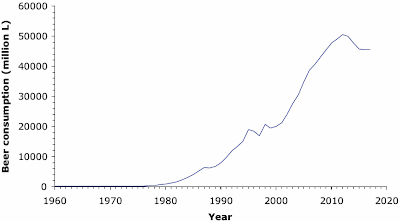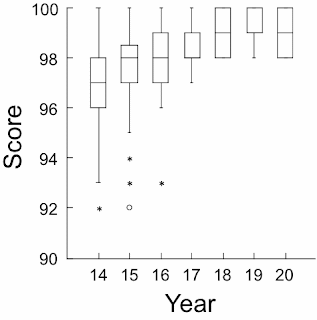In the latter case, the New Zealanders were responsible for the demise of the ANZUS treaty, by which the Australians and New Zealanders died in large numbers in Vietnam in the 1960s, alongside an even larger number of Americans. Some time later, the New Zealanders decided on an explicit non-nuclear policy, which meant that the Americans lost interest in them, because they could no longer re-stock their nuclear submarines in the South Pacific (see the map below).
New Zealanders have migrated to Australia in large numbers over the decades, including, most famously, John Clarke. However, the NZ Prime Minister who presided over the biggest wave of movement (Robert Muldoon) noted: "New Zealanders who emigrate to Australia raise the IQ of both countries." Smart alec. So, Australia usually wins any trans-Tasman sporting event (eg. cricket), except for Rugby Union, in which the New Zealanders are damned hard to beat, by anyone. Also, Australia did not have Footrot Flats.; they did, however, win the America's Cup 12 years before the New Zealanders.
All of this means, of course, that a comparison of Australian and New Zealand wines is of great importance, particularly with regard to wine exports.
So, let's start with the volume of wine exported. The data, as usual, come from the Annual Database of Global Wine Markets, compiled by Anderson, Nelgen and Pinilla (Tables T10 and T21), along with recent data from Wine Australia and Rabobank. The first graph shows the wine volume (vertically) exported from Australia (blue line) and New Zealand (pink line) since 1900.
As you can see, there was an exponential increase in the Australian exports from 1980, until a peak c. 15 years ago; since then, the average has stayed roughly the same (c. 700–800 million liters annually). For New Zealand, on the other hand, there was effectively no export before 1960, and very little before 1990, with an exponential increase from 1980 to 2010, and a more steady increase since then.
Now, Australia and New Zealand differ dramatically in size, and therefore in vineyard area, so that we would expect a difference in wine production, and thus export volume. Currently, Australia has c. 3.5 times as much vineyard area as New Zealand, and produces c. 4 times as much wine (New Zealand produces just 1.2% of global wine production). So, this mostly explains why Australia exports c. 2.5 times as much wine.
However, the difference in volume is interesting, since obviously New Zealand exports a greater percentage of its wine production (90%) compared to Australia (65%) (Which countries export most of their wine production?). Even more telling, though, is the price paid for that exported wine. This is shown in the next graph, which illustrates the value (in $US per liter) of the exported portion of the two wine productions. Note: there are no export price data for New Zealand (pink line) prior to 1963.
Clearly, there was not a lot of difference in value prior to 1990, but this difference increased rapidly over the subsequent 10 years, in favor of the New Zealanders, settling at a value about twice that of Australia over the past 10 years. This is sad.
The issue here, of course, is that Australia will export just about anything, no matter the price, and has thereby become a major exporter of bulk wine (Australian bulk wine exports are economically inefficient). This generates a great volume but not necessarily great value. People have heard of Yellow Tail and Penfolds, and not much else from Australia (and the less said currently about Treasury Wine Estates, the owners of Penfolds, the better). However, it must be remembered that Australia developed the bag-in-a-box concept way back in 1965 / 1970; which, unfortunately shows you just how far back mass-produced wine has been of prime interest.
On the other hand, New Zealand wine exports recently hit NZ$ 2 billion. This has been based on a premium image for the international reputation; and NZ wine apparently remains either the highest or second highest priced wine category in the USA, United Kingdom, Canada, and China (its biggest export markets are the USA, the UK, and Australia).
Mind you, it is sometimes characterized as a bit of a one-trick pony, being best known for its Marlborough Sauvignon blanc (Is Marlborough really the Sauvignon blanc capital of the world?), and more recently its Pinot noir from Marlborough, Martinborough and Central Otago. (I can also recommend their Riesling, Chardonnay and Pinot gris.) It has also been noted that the recent boost in exports appears to be largely driven by an increase in bulk wine sales, although bottled wine has hardly dropped, while both bulk and bottled wine have risen in value per liter.
For Australia, exports have hit a rocky patch, of course, Until recently, its top markets in terms of value have been China, the UK, and the USA. The first of these has tanked in recent months (Where China get its wine, these days). Actually, China is also New Zealand’s top trading partner — China is New Zealand’s largest market for exports and the second-largest source for imports. This has caused recent concern (Exposure to Chinese market turns New Zealand heads to Europe).
Perhaps the biggest current export problem for Australia, in terms of value, is not China, but the USA, as discussed in: A US mystery: Australia. This notes that, unfortunately:
- cheap Yellow Tail became the face of Australian wine in the USA
- Australia has not done a good job of educating the US about its wines, or encouraging the idea that they are worth premium price-points (eg. We shouldn’t be talking about Australian Cabernet anymore)
- there isn’t much knowledge in Australia of how the US market works, and thereby pricing wines appropriately for the three-tier system.
Finally, I will note that I can still get New Zealand lamb in the supermarkets here in Sweden, but I can no longer get Australian beef (it has been substituted by Canadian beef, it seems). This seems wrong, somehow. Besides, lamb may yet unite the two countries, in an unexpected way (see the video for Australian Lamb’s 2019 Australia Day advertisement).


